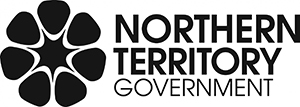Agriculture and Biosecurity newsletter: November 2024
What's new
Berrimah Farm Science Precinct opening
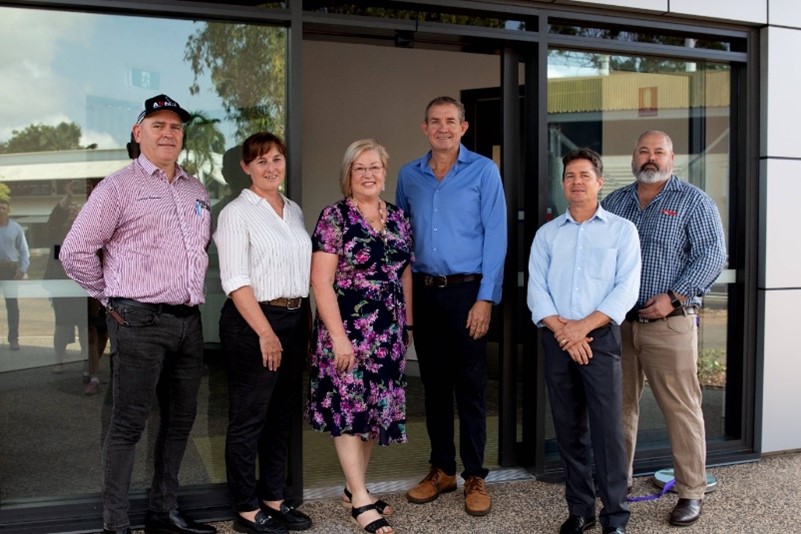
Last month DAF staff and stakeholders came together at the Berrimah Farm Science Precinct for the official opening of the Combined Science Services Building.
This state-of-the-art facility features new laboratories including entomology, plant pathology, virology, water chemistry and micro-biology as well as the Territory’s first eDNA laboratory to enable the ability to identify diseases from air or water samples.
The facility is a welcome addition to the Precinct with staff based at Berrimah Farm already moving into their new HQ.
The Combined Science Services Building will increase our ability to respond to biosecurity incursions, undertake water testing and support the NT’s growing agriculture and fisheries industries.
The opening of the new building marked the completion of the Territory’s world class $45 million Berrimah Farm Science Precinct which also includes a facility for post-harvest and field research, molecular diagnostics as well as the only biosecurity containment level 3 laboratory in northern Australia.
Congratulations to Lorraine Corowa and her team for overseeing the opening and facilitating staff moving into their new headquarters.
Follow Agriculture NT
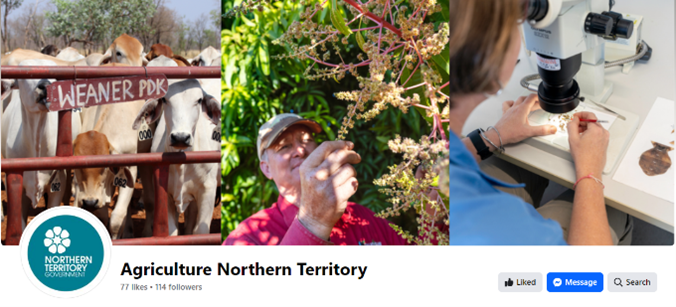
Are you following the Department’s new Facebook channel @Agriculture Northern Territory
Launched last month the new page aims to promote DAF’s Horticulture, Livestock and Biosecurity projects, programs, events, news and activities with industry, the business community, stakeholders and Territorians.
@Agriculture Northern Territory will be the lead Northern Territory Government channel for agricultural information, scientific research, biosecurity best practice and alerts, compliance updates and important animal welfare information.
The new page will enhance our reach across the Horticulture, Livestock and Biosecurity sectors and bring together the existing Facebook groups Biosecurity Northern Territory and AgricultureNT. These groups will be archived from 1 December 2024.
Staff are encouraged to follow and contribute to the new page to ensure we reflect the important work of the Department. To contribute email communications.daf@nt.gov.au.
The Facebook channel @Fisheries NT will continue to promote the work of our Fisheries division with all things aquaculture and recreational fishing to their 11,000+ followers!
Strengthening Northern Territory cattle industry with biosecurity training
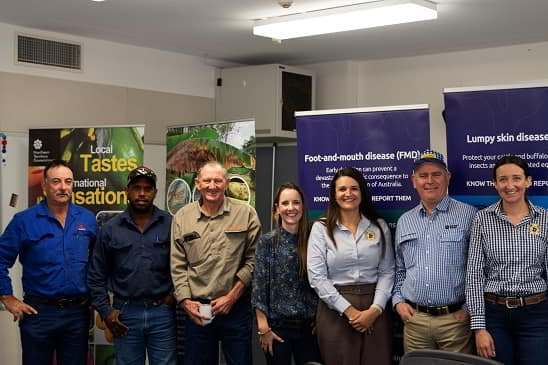
The Northern Territory Government has partnered with the NT Cattleman’s Association (NTCA) to ensure pastoralists are equipped with a comprehensive understanding of how an Emergency Animal Disease response would operate in the Northern Territory to protect the Territory’s billion-dollar cattle industry.
Last month the Territory’s Chief Veterinary Officer, Dr Rob Williams joined the NTCA to deliver emergency animal disease training across all NT regions throughout October.
The Industry Biosecurity Response Readiness Training sessions were held in locations across the NT including the Berrimah Research Farm, Top Springs, Timber Creek, Katherine Research Station, Daly Waters, Barkly Homestead, Tennant Creek, and Alice Springs.
The training covers on-property actions, outlines the coordination of an animal disease response at both Territory and Commonwealth levels, and provides pastoralists the opportunity to hear directly from the Territory’s Chief Veterinary Officer.
Northern Territory producers, land managers, researchers, industry professionals and community members can find out more about biosecurity alerts and other information by visiting the Northern Territory Government website.
Connecting North Australian Beef Producers
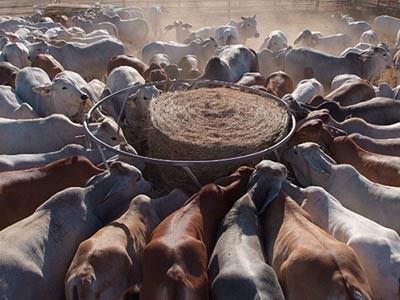
FutureBeef is a one-stop shop for Northern beef producers to access information, webpages, eBulletins, webinars and social media on various topics including pastures, animal health, economics, supply chain and more.
From the latest practical tools to new scientific insights, FutureBeef provides relevant and timely advice with a particular focus on supporting beef producers and livestock advisors.
FutureBeef supports sustainable and profitable productivity gains for northern beef producers. It is an ongoing partnership of the Northern Territory Government (the former Department of Industry, Tourism and Trade, now the Department of Agriculture and Fisheries) with the Queensland Department of Agriculture and Fisheries, Western Australia Department of Primary Industries and Regional Development and Meat & Livestock Australia (MLA).
The FutureBeef website already features over 1,000 pages of content, and research findings in:
- animal health and welfare
- animal production
- grazing land management
- people and business.
To connect with FutureBeef:
- Visit the FutureBeef website
- Subscribe online to the monthly eBulletin
- Like the FutureBeef Facebook page
- Follow FutureBeef on Twitter
- Subscribe to the FutureBeef YouTube channel.
For more information contact DAF Pastoral Extension Officers’ Stacey.holzapfel@nt.gov.au or mary.williams1@nt.gov.au.
Kidman Springs BeefUp
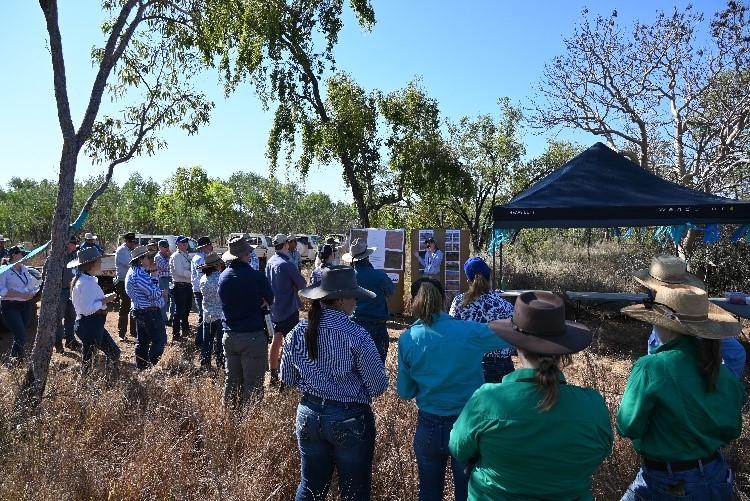
Guest speakers, attendees, sponsors and industry reps gathered at Kidman Springs for the industry-meets-research event of the year in the Victoria River District of the Northern Territory.
Kidman Springs (also known as Victoria River Research Station) hosted a jam-packed two-day BeefUp Forum from Monday 20 August to Tuesday 21 August 2024. The event was opened by Deputy CEO of Agriculture, Fisheries and Biosecurity division, Jed Matz, followed by a welcome from DAF’s former Senior Executive Director of Agriculture, Phil Hausler.
The forum kicked off with a markets and export session with a live export update from Meat and Livestock Australia’s (MLA) program manager Peter Dundon, followed by a markets panel facilitated by Kari Moffat (AAM Investment Group). Panel members included Rodd Dyer (FocusGroupGo Asia), Dr Ross Ainsworth (NT Department of Agriculture and Fisheries), Peter Dundon (MLA), and Ceny Hussie (NT Cattlemen’s Association).
The Territory Governments Senior Rangelands Officer Robyn Cowley led a brilliant panel session discussing the ‘Sweet Spot’ for pasture utilisation and the effect this has on breeder performance. Robyn was joined by Dan Chapman (AACo.), Dr Steve Petty (Clean Agriculture and International Tourism) and Mike Bailey (Newry Station). There were plenty questions from the audience which were met with open and practical responses from the industry members on the panel.
A convoy of Toyotas and bulldust saw the attendees tour the paddocks of Kidman Springs to hear from Gretel Bailey-Preston about the Select Brahman herd and the Repronomics 2 project. This was followed by Rodd Dyer and Robyn Cowley sharing the findings of the long running Shruburn project while standing amongst the visibly different treatment plots. The afternoon tea doubled as a 30th Birthday celebration for the project (cake was involved!).
A visit to the legume establishment plots gave a visual representation of the trial process with the NT Department of Agriculture and Fisheries (DAF) Principal Agronomist Arthur Cameron providing an agronomic perspective on the first year of data collected from the plots. DAF Research Officer Tim Schatz gave an overview of the Crops for Cattle project, with Kidman Springs being one of the 10 properties feeding weaners and assessing the profitability of different feeding strategies.
To finish off day one, we were greeted by a drone display from Alex Kaiserman (AK Sky Services) as we arrived back at the homestead to hear the latest on virtual fencing from Gallagher’s Nat James.
Day 2 of BeefUp began with a Cattle Australia update from Kari Moffat (Cattle Australia NT Rep) and an animal wellbeing update from Michael Laurence (MLA).
Gretel Bailey-Preston (NTDAF) facilitated a genetics and reproduction panel where Elsie Dodd (UQ), Brad Inglis (Sturt Plains Station), Peter Letchford (Pastoral Veterinary Solutions) and Whitney Dollemore (Northern BreedAssist) covered all aspects from bull selection, visual and EBV traits, climate adaptability and herd management.
DAF’s Tim Schatz delivered a presentation about the findings from the Easy P project that he has been leading for the past four years. The data not only highlights the importance of phosphorous (P) supplementation but suggests the “Easy P” method results in the same, if not better, breeder performance than traditional wet season P supplementation. The Easy P method involves including P in dry season supplement and putting all the wet season supplement out before the rains start so that supplement does not have to be delivered during the wet season.
Ben Wratten from AAM Investment Group took attendee’s through the company’s current feeding strategies at Legune and Maryfield Stations including the challenges, achievements and future aspirations for their cropping and feeding programs.
Mary Williams (NTDAF) spoke about the findings from the legume establishment plots as well as results from trial plots on commercial stations in the VRD. Her presentation included weight gain data from the two heifer cohorts at Kidman Springs, with one heifer in a control paddock and the other heifer in a paddock with a higher content of naturalised stylo species.
Rusty Richter (Heytesbury Pastoral Company) facilitated a session on improved pastures. The panel consisted of Dan Chapman (AACo.), Arthur Cameron (NTDAF) and Matt Dennis (E.E Muirs), who covered the history of improved pastures in the NT, where improved pastures are heading and what potential hurdles to expect in the VRD.
Ross Ainsworth (NTDAF) gave a Foot and Mouth and Lumpy Skin Disease update from the perspective of a vet who has spent time in Southeast Asia and seen the impacts of these diseases firsthand. This provided valuable information to NT producers about what to expect if an outbreak does occur.
Christie Pearson (NTDAF), the final speaker for the BeefUp forum presented the findings of the Paddock Power project which looked at infrastructure developments to maximise paddock utilisation by increasing water areas and therefore decreasing distance to water for cattle, resulting in more even grazing. The calculator tool developed by Dionne Walsh (formerly NTDAF, now RangeIQ) allows different infrastructure combinations to assist in determining the best position for infrastructure.
Thank you to all attendees, there was great engagement in the BeefUp event and we hope you see you again at Kidman Springs in 2026!
Thanks go to sponsors Elders, Zoetis & Northern Hub. The event was supported by the Future Drought Fund, MLA, CRCNA, UNE and NTDAF and the event was catered for brilliantly by Raqual from Station Cooks Solutions.
Mango Harvest at the Katherine Research Station
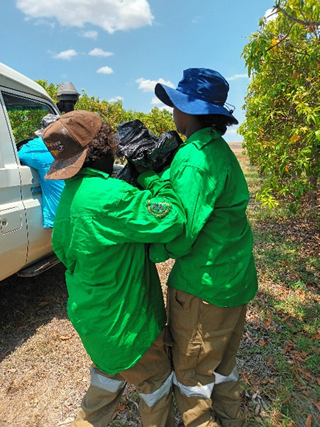
Last month, Wugularr School teamed up with the Indigenous-owned company Nyirrunggulung-RISE and the Department of Agriculture and Fisheries (DAF) Plant Industries team for a rewarding day of mango harvesting at the Katherine Research Station
During this hands-on experience, the students learned all about harvesting mangoes, including the optimal time for picking and techniques for gathering the fruit.
They also had the opportunity to work alongside community members affiliated with Nyirrunggulung-RISE.
After a morning of hard work, everyone enjoyed the fruits of their labour by enjoying fresh mangoes together. This collaborative effort not only highlighted the importance of community but also celebrated the delicious rewards of their harvest.
Nyirrunggulung-RISE regularly visits the Katherine Research Station during the peak mango season, assisting the horticultural team in collecting mangoes. They distribute the harvest to local communities, schools, aged care centres, women’s shelters, creches, and other community organizations, reinforcing their commitment to supporting Aboriginal communities in the Central Arnhem Land region, including Wugularr, Barunga, Manyallaluk, Binjari, and Bulman.
The mangoes harvested are part of ongoing research trials aimed at enhancing our understanding of mango growth patterns and other factors that contribute to a more productive harvest. This initiative exemplifies the vital role of collaboration with local organisations like Nyirrunggulung-RISE, showcasing how such partnerships can foster community engagement, knowledge exchange, and positive outcomes for all involved.
Effective use of Buffalo fly tags
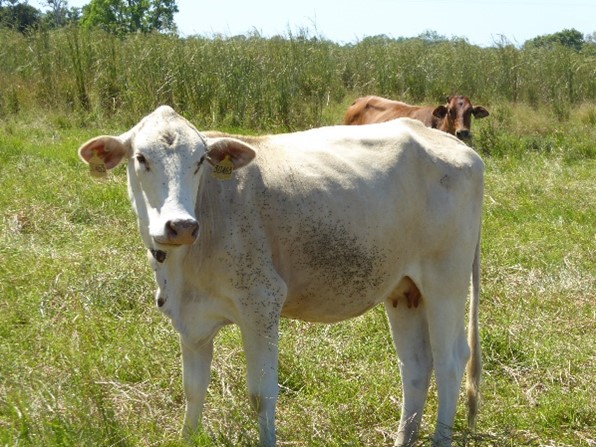
Buffalo fly tags are designed to ease fly burden during the wet season in Northern Australia and reduce the amount of skin lesions caused by reactions to Buffalo fly bites. If fly tags are not used correctly, they may not be as effective as they should be and problems such as resistance can occur.
The use of buffalo fly tags on cattle can be very profitable, but there is a risk that these benefits may be lost if tags are not used properly.
Buffalo flies were rated as the number one most costly endemic disease/condition for the Australian beef cattle industry in Meat and Livestock Australia’s 'Priority list of endemic diseases for the red meat industry — 2022 update'. The authors estimated the economic cost of buffalo flies to the cattle industry to be around $170 million per year in lost production and control costs.
Management Strategies
An integrated approach to buffalo fly control and treatment is recommended, for example, use of buffalo fly traps and dung beetles to reduce the buffalo fly population, selecting cattle with better genetic resistance to buffalo flies and only using chemical treatments when flies are likely to cause significant welfare or economic problems. For further information visit Publictions.mla.au.
One of the treatment options is to use fly tags/plastic ear tags that are impregnated with chemicals that repel buffalo flies. Recent trials with fly tags in the NT found that using fly tags increased cattle weight gain by 0.09 kg/day (9.8 kg over 16 weeks) in the Douglas Daly region (Schatz et al, 2019), and 0.15 kg/day (23 kg over 22 weeks) in a floodplain environment (Schatz et al, 2023). The return on investment in the latter trial was >900% with the cattle price ($4.00/kg) and fly tag cost (9.90/head) at the time.
How do buffalo flies develop chemical resistance?
While fly tags provide huge benefits in areas where buffalo flies are a problem, if they are not used well and resistance develops, they will lose their effectiveness. This has happened in parts of America, where cattle producers have found that fly tags no longer work.
To prevent this happening, all flies exposed to the chemical must encounter a high enough dose – exposure to low doses of the chemical allows the more chemical-tolerant flies to survive and pass on their resistant genes. This is why it is important to follow the manufacturer’s instructions.
Some common mistakes that will increase the likelihood and speed of resistance development are:
- Not using the recommended number of fly tags: If only one tag per animal is used when two are recommended, or the required number of animals aren’t tagged, the buffalo fly population is exposed to weaker than recommended doses of the chemicals, increasing the chance of resistance.
- Leaving tags in for longer than the recommended time: The effectiveness of chemicals in fly tags declines over time, so leaving them in longer than the recommended time (usually 16 weeks) means that buffalo flies are exposed to a weaker dose.
While these decisions may be perceived as a cost-saving in the short term, it could lead to the loss of a management tool for the region which is much more costly in the long term.
How to avoid chemical resistance
A tactic that can be used to prevent or delay the development of resistance is coordinating and rotating the active ingredient in fly tags each year.
If all the producers in a region use the same type of fly tags, and then all change to a different type the following year, the buffalo fly population has less time to develop resistance to a chemical.
This will become even more important in future, as Diazinon based fly tags (eg. Patriot, Warrior, Optimiser etc.) will be banned from 10 September 2025, leaving fewer options for rotation. In the Top End of the NT, Shaun Healy (currently at Nutrien Ag Solutions, Darwin) has been providing recommendations to coordinate a buffalo fly tag rotation since 2000. In the near future the Department of Agriculture and Fisheries will publicise his recommendations on their Facebook channel @agriculturenorthernterritory site and the FutureBeef website.
Along with regional coordination of rotating active ingredients to manage resistance each property should aim to implement the following practices when using fly tags:
- remove tags after the specified time – if tags are used on cattle over the wet season and cannot be replaced by the recommended time, it would be better to look at alternative management strategies, eg. selecting cattle that are less susceptible to buffalo flies (just like humans, some animals react differently to insect bites than others)
- ensure the required number of tags are used per animal and per mob
- consider rotating any other chemicals used on-property that use the same active ingredients as fly tags, these could also influence fly resistance
- use an integrated approach to management where possible and aim to decrease the fly susceptibility of your herd so that you are not reliant on chemicals in the long term.
For more information contact Department of Agriculture and Fisheries Director Livestock industries tim.schatz@nt.gov.au.
Consumer trials juicing up Australia’s jackfruit industry
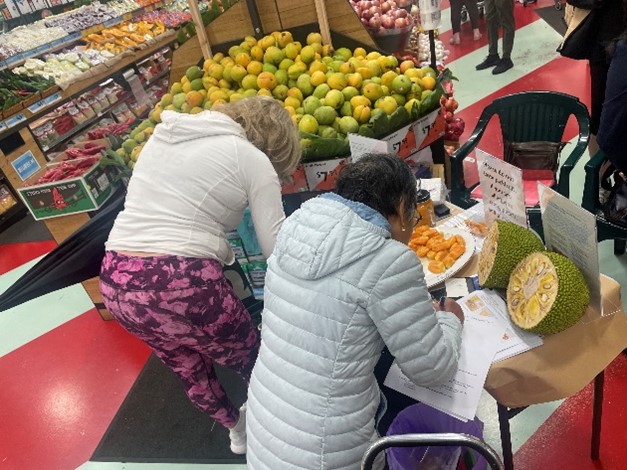
Researchers in the Northern Territory are working with food processors and major grocery retailers to develop ready-to-eat jackfruit products to grow the Australian jackfruit industry.
Last month consumers in Sydney were offered an opportunity to taste jackfruit grown in the Northern Territory as part of the Developing ready to market jackfruit products for Australian market growth project led by the Northern Territory Government’s Department of Agriculture and Fisheries (DAF) with support from the University of Melbourne and nearly $1 million in funding from AgriFutures Australia.
As the largest tree fruit in the world ripe jackfruit is akin to the tropical tastes of banana, mango, and pineapple, and when unripe, its stringy texture is known to be a healthy meat substitute increasingly popular in western cuisine.
While the local industry is currently worth $2 million a year, creating new products such as jackfruit juice and packaged arils will grow the domestic jackfruit market.
The small Australian jackfruit industry based in tropical areas of North Queensland and Darwin in the Northern Territory is seeking to tap into this rising consumer interest with international competitors only permitted to sell canned product rather than fresh jackfruit in Australia.
As part of the project three jackfruit products were offered for consumers who were asked to provide feedback on their preferred product, including impressions of taste and aroma, and whether they would buy a similar product.
The focus was on building product awareness and gauging consumer acceptance as well as providing a pathway to develop a supply chain to maximize the value proposition of the project.
Jackfruit has many potential uses beyond fresh fruit and can be harvested at different physiological stages depending on the choice for consumption.
The arils can be cooked when they are green for a savoury flavour, the seeds can be roasted like nuts and other parts of the fruit can be processed into highly nutritious products.
The University of Melbourne and his research team are delving deeper into the potential of jackfruit, including harvesting jackfruit seeds to create innovative food products.
The project aims to help Australian jackfruit growers and processors achieve their vision of making Australian-grown, value-added products a reality.
Katherine Research Station Placement by Andrew Felmingham
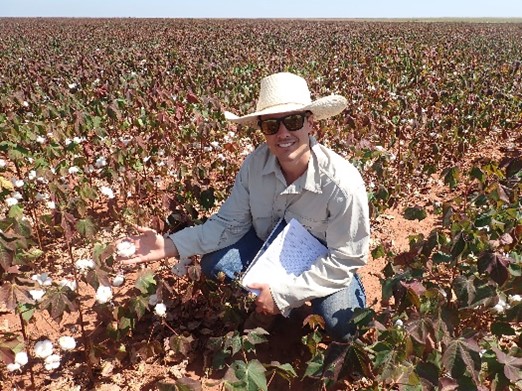
My time working in the Department of Agriculture and Fisheries Agriculture division through the Northern Territory Government Graduate Program was a fantastic experience. It gave me insight into the complex networks within the agricultural industry and the diverse career options it can present.
I developed a strong appreciation for the knowledge agricultural professionals have and the role each person plays in maintaining sustainable food sources for Australia.
During my 2 month placement I was fortunate to be involved in livestock, cropping and horticulture research projects across the Big Rivers region. I first spent two weeks at Kidman Springs Research Station and Douglas Daly Research Farm to muster and process cattle involved in fertility trials. The research projects aim to use selective breeding to improve reproductive success in areas with harsh environmental conditions. The hot climate, parasites, large paddocks and low-quality pastures during the dry season are all challenges NT pastoralists face and it was fascinating to compare how dissimilar it is to my home state of Tasmania.
The remoteness of the NT can make logistics difficult, so drawing on solutions that may have worked in another region may not work here. For example, applying nitrogen fertiliser isn’t a pragmatic way to improve pastures in many regions of the NT because of its lack of availability and the huge expense to transport it.
In the Katherine and Douglas Daly regions I helped to collect data as part of a cotton project to test the effect rotational crops had on lint and seed yield. I learnt about the addition of the Bt gene to commercial cotton to developed pest resistant traits; in turn reducing the need for pesticide use.
The Kimberley Cotton & Cattlemen Forum, research farm field days, and information distributed by government agencies and industry bodies are a testament to the effort being put into providing education on a changed cotton industry.
By attending the Kimberley Cotton and Cattle Forum, I learnt about the benefits cotton-seed can have as a supplementary, high-protein cattle feed. Cotton seed is a bi-product of the cotton ginning process, so utilising it is a win for everyone. It reminds me of the small permaculture movements in regional Tasmanian communities trying to utilise land management by recycling available bio-products. Hopefully there are future possibilities for more cross-industry relationships aimed at maximising value from crops and reducing waste.
2024 Australian Cotton Conference: Cultivating Excellence
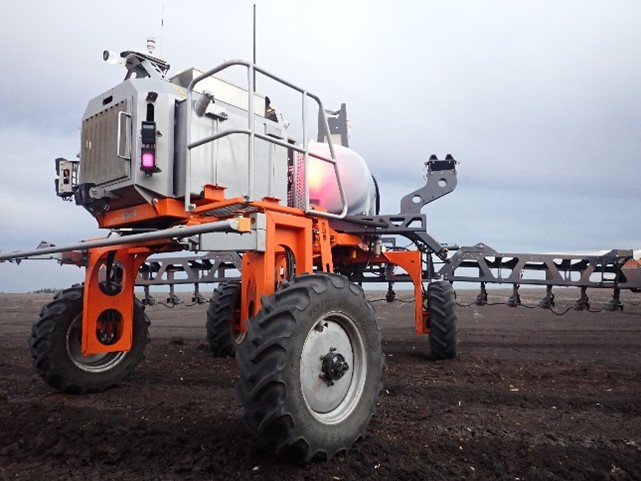
An unmanned robotic sprayer spraying on the cotton paddock, Dalby.
Cropping Group Members and NT cotton growers participated in NT Farmers’ Industry Tour in Darling Downs on 4 - 5 August, and the 2024 Australian Cotton Conference, held at Gold Coast, Queensland, from 6-8 August 2024.
The Department of Agriculture and Fisheries Cropping Group members Patrick Di, Edward Mwando, Stacey Stanley, Simon Ong, Shah Nawaz and Saeedeh Taghadomi-Saberi joined Territory cotton growers and NT Farmers Association on an industry tour in the Darling Downs region prior to attending the 2024 Australian Cotton Conference in Gold Coast in early August.
The group visited a local cotton farm in Jimbour near Dalby to observe his pioneering work using the SwarmFarm Robotics autonomous farming platforms for precision application of herbicides to increase the efficiency and effectiveness of weed management. In addition, the property is accredited with myBMP, a voluntary farm and environmental management system which provides self-assessment mechanisms, practical tools and auditing processes to ensure that Australian cotton is produced according to best practice. During the visit, the team also discussed dryland cotton production and soil moisture management practiced by the property using cover crops and skip rows.
On the second day of the tour, the team visited a cotton gin facility in Dalby. The team had the opportunity to observe cotton bale reception, handling and processing; as well as how plastic contamination and detritus was separated from the cotton. Afterwards, the team visited Michael “Mick” Simmich’s property near Oakey Creek, Dalby, to observe the bankless channel irrigation widely used on his farm. Lastly, on the same day, the team visited the entomology laboratory in Toowoomba for insights into bollworm and armyworm resistance monitoring utilising molecular techniques.
The team travelled to Gold Coast, where they attended the three-day Cotton Conference. This year’s theme was ‘Cultivating Excellence’, and the event was attended by almost 2900 participants; comprising of cotton growers, agronomists, industry delegates, government bodies, students and many others involved in diverse aspects of Australia’s AUD$4.2b cotton industry.
A total of 77 speakers and 6 discussion panels covered an enormous breadth of topics such as water sustainability, social licence, supply chain transparency, application of artificial intelligence, pest and disease management, the garment industry, etc. Despite their diverse perspectives and backgrounds, the presenters held a shared vision of growing a sustainable, thriving and responsible cotton industry in Australia.
The DAF Cropping Group members dispersed to attend as many of the concurrent plenaries as possible, but came together for talks focusing on the unique challenges and experiences of growing cotton in northern Australia; particularly in the unique Territorian context where the vast majority of the industry is rain-fed. Around 100 exhibitors showcased their brands and organisations in the Trade Hall and the members of the DAF Cropping Group took full advantage of the networking opportunities between presentations to browse current research, innovative technologies, brands, challenges and ideas.
The conference culminated in the Australian Cotton Industry Awards Dinner. The team would particularly like to congratulate PhD candidate at the Queensland Department of Agriculture and Fisheries and CottonInfo Biosecurity Technical Lead Sharna Holman, who won the prestigious Chris Lehman Young Cotton Achiever of the Year Award for her work on Bacillus thuringiensis (Bt) resistance management of cluster caterpillar (Spodoptera litura) in northern Australia.
The 2024 Cotton Conference has inspired and motivated the Cropping Group to apply novel approaches to its cotton research in the Northern Territory and to continue to align its research goals with the needs of the NT cotton industry and Territorians.
2024 Australia Agronomy Conference
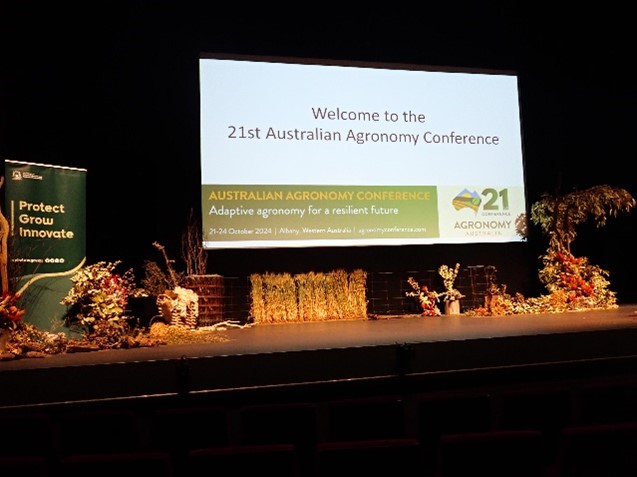
Last month the Department of Agriculture and Fisheries Plant Industries team attended the 2024 Australia Agronomy Conference held in Albany, Western Australia.
With a total of 6 papers presented by DAF staff the presenters did an outstanding job representing the Territory and our important research.
Papers presented at the conference included:
- Aspects of the Biology of Aulacosternum nigrorubrum (Dallas) (Hemiptera: Coreidae) in Cultivated Cotton Hosts by Ong Simon
- 2023 Industrial Hemp Variety Trials: Results from the Northern Territory by Nawaz Shah
- Data-driven insights for cotton farming in the northern territory: An exploratory analysis by Edward Mwando
- Dual-Purpose Peanuts: A potential to reinvigorate a high-value legume crop and its popularity with growers whilst addressing significant feed demands of the Australian beef industry by Edward Mwando
- High soil temperature reduces hemp germination: Preliminary laboratory findings from Northern Territory by Induni Vijaya Kumar
- Insights on adoption of climate smart agricultural practices in central Australia by Girija Page.
Participation in 2024 Australia Agronomy Conference provided the team with the opportunity to interact with colleagues from different institutions and learn about new research and techniques.
Darwin will be host city to the Australia Agonomy Conference in 2026.
2024 Symposium of International Tropical Fruit Network (TFNet)
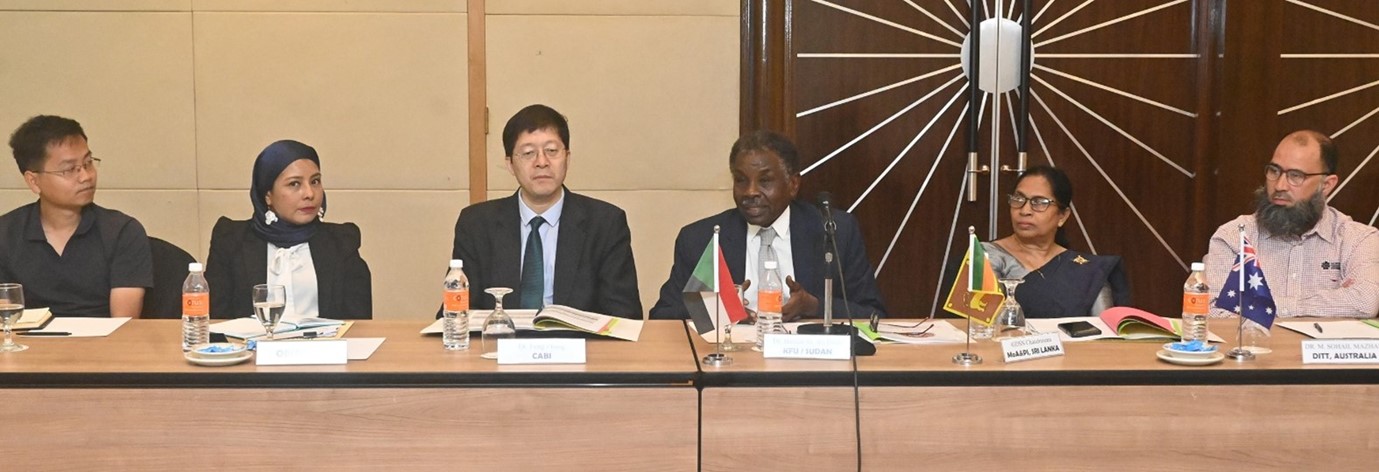
Dr Muhammad Sohail Mazhar participated and presented as Country Representative of Australia at the 2024 Symposium of International Tropical Fruit Network (TFNet).
TFNet, originally established under the auspices of the Food and Agriculture Organization of the United Nations (FAO), is an intergovernmental and inter-institutional international organization, with the mandate and role to promote sustainable global development of the tropical fruit industry in relation to production, consumption and trade. It is membership-based, with members acting through one lead agency on inter-country decisions. It is based in Malaysia.
This trip offered an opportunity for Dr Mazhar to represent Australia at an international forum - contributing to the Northern Territory Government’s strategic outcome of regional development.
Interactions and network established through this forum with delegates of TFNet member countries from South East Asia and Pacific Region will create opportunities for future research and development cooperation. Joint regional research projects on tropical fruit crops will be developed with countries of mutual research and economic development interest.
Engagement with the TFNet member countries will be maintained for developing research and development projects of mutual interest for sustainable growth of the Territory’s tropical fruit industries.
Upcoming Workshops and events
Territory Women encouraged to nominate for the 2025 Rural Women’s Award
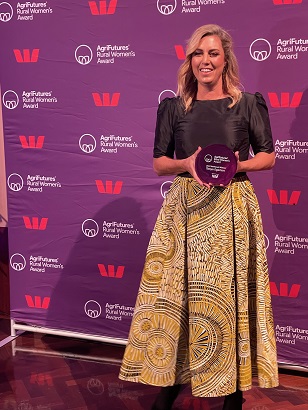
Territory women who play a role in the NT’s rural industries, businesses and communities are encouraged to nominate for the 2025 NT AgriFutures Rural Women’s Award. The annual Award celebrates the leadership of women in the NT and Australia’s rural communities and industries and provides a platform to inspire and support women in the rural sector.
As part of the award, a finalist is selected from each state and territory, with a national winner announced in late 2025.
Each finalist receives a $15,000 bursary for their project, business or program, as well as access to professional development opportunities and alumni networks with the national runner up awarded an additional $15,000 bursary and the overall national winner awarded an additional $20,000 bursary.
The AgriFutures Rural Women’s Award has been running for 21 years with the 2024 National winner local Territorian Tanya Egerton.
As CEO of Circulanation, Tanya has spearheaded the Remote Opshop Project which supports the establishment of a network of community-owned and led opshops in remote First Nations communities, providing access to affordable essential items and small business training while generating independent funding that supports culturally focused projects.
The Rural Women’s Award is proudly supported by the Northern Territory Government and coordinated in the Northern Territory by the Department of Agriculture and Fisheries.
Northern Territory applications close 12pm AEDT, Friday, 24 January 2025.
For more information about the awards, head to AgriFutures Australia website.
Give feedback about this page.
Share this page:
URL copied!